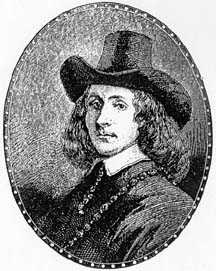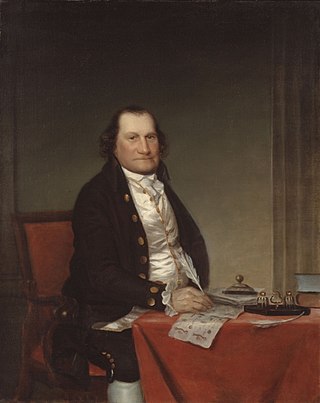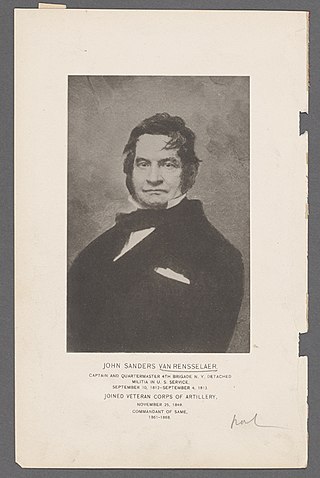Related Research Articles

Robert Livingston the Younger, sometimes known as Robert Livingston Jr., or The Nephew was a wealthy merchant and political figure in colonial Albany, New York.

Leendert "Leonard" Gansevoort was an American political leader from New York who served as a delegate to the Continental Congress in 1788.

Peter Gansevoort was a Colonel in the Continental Army during the American Revolutionary War. He is best known for leading the resistance to Barry St. Leger's Siege of Fort Stanwix in 1777. Gansevoort was also the maternal grandfather of Moby-Dick author Herman Melville.

Philip John Schuyler was an American general in the Revolutionary War and a United States Senator from New York. He is usually known as Philip Schuyler, while his son is usually known as Philip J. Schuyler.

Killian Killian Van Rensselaer was an American lawyer and Federalist politician who served in the United States Congress as a Representative from the state of New York.

Pieter Schuyler was the first mayor of Albany, New York. A long-serving member of the executive council of the Province of New York, he acted as governor of the Province of New York on three occasions – twice for brief periods in 1709, after the death of Lord Lovelace, and also from 1719 to 1720, after Robert Hunter left office.
The Van Alstyne's Regiment of Militia, also known as the 7th Albany County Militia Regiment, was called up in July, 1777 at Kinderhook, New York to reinforce Gen. Horatio Gates's Continental Army during the Saratoga Campaign. The regiment served in Brigadier General Abraham Ten Broeck's Brigade. With the defeat of General John Burgoyne's British Army on October 17, 1777, the regiment stood down. It is uncertain whether the regiment participated in the October 7 Battle of Bemis Heights, and if it did, whether the entire regiment was there.
The Schuyler family was a prominent Dutch family in New York and New Jersey in the 18th and 19th centuries, whose descendants played a critical role in the formation of the United States, in leading government and business in North America and served as leaders in business, military, politics, and society. The other two most influential New York dynasties of the 18th and 19th centuries were the Livingston family and the Clinton family.

The Van Cortlandt family was an influential political dynasty from the seventeenth-century Dutch origins of New York through its period as an English colony, then after it became a state, and into the nineteenth century. It rose to great prominence with the award of a Royal Charter to Van Cortlandt Manor, an 86,000-acre (35,000 ha) tract in today's Westchester County sprawling from the Hudson River to the Connecticut state line granted as a Patent to Stephanus Van Cortlandt in 1697 by King William III.

Abraham Ten Broeck was a New York politician, businessman, and militia Brigadier General of Dutch descent. He was twice Mayor of Albany, New York and built one of the largest mansions in the area, the Ten Broeck Mansion, that still stands more than 200 years later.
The creation of the Tryon County, New York militia was authorized on March 8, 1772, when the Province of New York passed a bill for the establishment of organized militia in each county in the colony. By 1776, the Tryon County militia had in effect become an army of rebellion under the control of the Tryon County Committee of Safety. The Tryon County militia would go on to fight at the important battles of Oriskany and Johnstown during the war.

Dirck Ten Broeck was an American lawyer and politician. The first name is sometimes given as Derick.
Robert Van Rensselaer was Brigadier General during the American Revolutionary War, a member of the New York Provincial Congress from 1775 to 1777 and later a member of the New York State Assembly in the 1st, 2nd and 4th New York State Legislatures.
Hendrick van Rensselaer was director of the Eastern patent of the Rensselaerswyck manor. The estate was composed of land in Columbia County, New York, and land opposite Albany, New York, on the Hudson River, named Greenbush.

Philip Kiliaen van Rensselaer was the second son of Colonel Kiliaen van Rensselaer and Ariaantie (Schuyler). He was a merchant by trade, and his experience in transporting cargo may have helped qualify him as keeper of the Albany arsenal. He was variously referred to as storekeeper, military storekeeper and Commissary for the Northern Department.
Colonel Kiliaen van Rensselaer was a colonial American soldier and politician who was a member of the prominent Van Rensselaer family.

Catherine Van Rensselaer Schuyler ;, also known as "Kitty", was a Colonial and post-Colonial American socialite and the matriarch of the prominent colonial Schuyler family as wife of Philip Schuyler.
Volkert Petrus Douw was a merchant and politician from Albany, New York who was prominent both during colonial times and after the United States was established.
Lt.-Col. Hubertus "Gilbert" Livingston was a younger son of Robert Livingston the Elder who was a lawyer and politician in colonial New York.

John Sanders Van Rensselaer was an American lawyer and soldier.
References
- New York in the Revolution as colony and state, Vol. 1. Albany, New York: New York State, Comptroller`s Office. 1904.